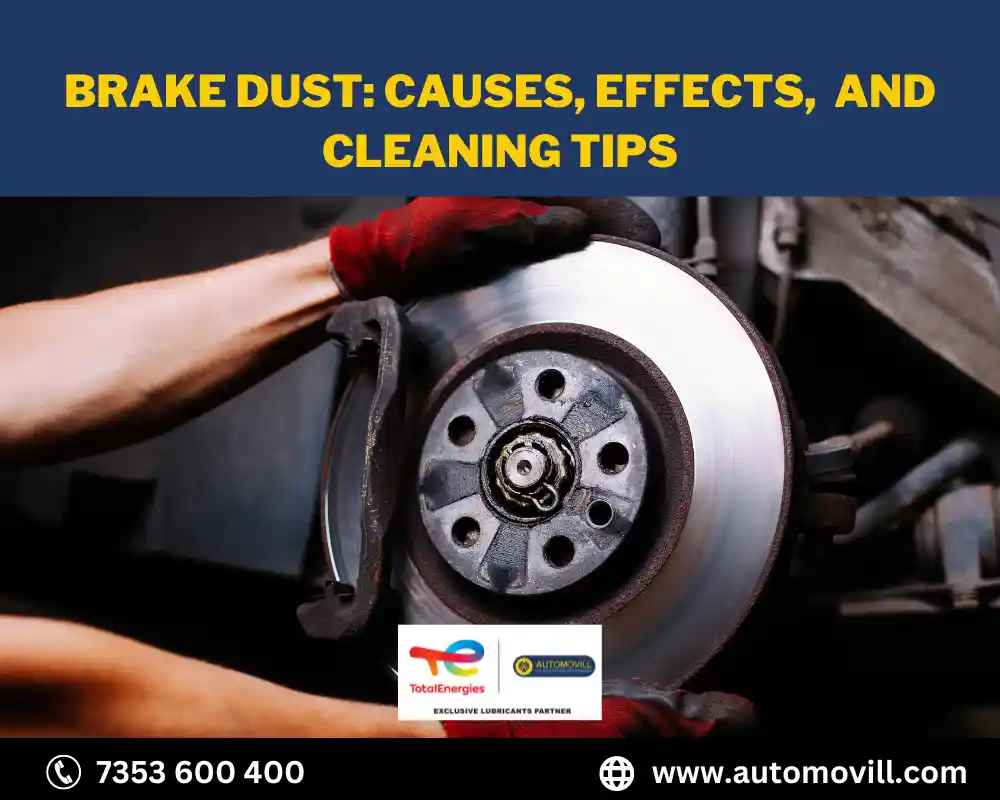
Brake dust can be a persistent problem for car owners, affecting the appearance and performance of their vehicles. Understanding the causes of brake dust, and its effects, and implementing effective cleaning techniques is crucial for maintaining the aesthetics and longevity of your wheels.
In this blog post, we will explore the causes of brake dust, discuss its effects, and provide you with practical tips on how to clean it effectively.
Causes of Brake Dust
Here are:
1)Brake Pad Friction
The primary cause of brake dust is the friction generated between the brake pads and rotors during braking. As the brake pads wear down, microscopic particles are released, forming brake dust.
2) Composition of Brake Pads
Different brake pad materials contribute to varying amounts of brake dust. Semi-metallic and low-metallic brake pads tend to produce more dust compared to ceramic brake pads.
3) Environmental Factors
Another cause of brake dust can be environmental factors such as road conditions in rural areas, weather conditions, and the overall driving environment.
Why You Should Clean Brake Dust:
Aesthetics: Brake dust accumulates on wheels, creating an unattractive appearance. Regular cleaning helps maintain the visual appeal of your vehicle and keeps the wheels looking their best.
Wheel Protection: Brake dust contains iron particles that, when left untreated, can corrode the wheel finish. Regular cleaning helps prevent long-term damage and preserves the integrity of your wheels.
Improved Performance: Excessive brake dust buildup can impact the performance of your brakes by interfering with their efficiency. Clean wheels ensure optimal brake functioning.
Effective Cleaning Techniques
1) Regular Maintenance
Clean your wheels regularly using a soft brush or microfiber cloth to remove loose brake dust particles.
2) Wheel Cleaners
Choose a wheel cleaner specifically formulated to remove brake dust. Follow the manufacturer’s instructions for safe and effective use.
3) DIY Cleaning Solutions
Create a DIY cleaning solution using mild dish soap and water. Apply the solution to the wheels, use a brush to agitate the dust, and rinse thoroughly.
4) Protective Measures
Apply a wheel sealant or wax to provide a protective layer, making it easier to remove brake dust during future cleanings.
Preventive Measures to Minimize Brake Dust Accumulation
- Ceramic Brake Pads: Consider switching to ceramic brake pads, which tend to produce less brake dust compared to other materials.
- Regular Brake Inspections: Ensure your brake system is in good condition through regular inspections and maintenance. Well-maintained brakes generate less brake dust.
- Gentle Braking: Avoid aggressive braking whenever possible, as it can accelerate brake pad wear and increase brake dust production.
Conclusion
Brake dust accumulation is a common issue, but by understanding its causes and effects, as well as implementing effective cleaning techniques, you can keep your wheels clean and maintain the overall aesthetics of your vehicle.
Regular cleaning not only enhances the visual appeal but also protects your wheels from potential damage. By following the tips provided above, you can ensure your wheels stay in great condition and optimize the performance of your car’s braking system.
